#trial of the century
Text
youtube
#court trials#trial of the century#trial of Oj Simpson#Trial of mark fuhrman#Mark fuhrman on trial#Mark fuhrman#LAPD on trial#Youtube
2 notes
·
View notes
Text

It's a defining moment in pop culture and history. It was widely televised and divided the nation, a case where celebrity, domestic violence and race intersected, and DNA was still relatively new. This is a weird question to me. That's like asking why ppl still care about 9/11. The OJ case was dubbed "the trial of the century" and he's literally the most famous celebrity to ever be tried for murder. Plus it was the longest and most expensive trial in California history. It changed the way that LAPD dealt with DV in certain aspects. Who gives af about Milli Vanilli. What kind of comparison is that.
#thoughts#oj simpson#trial of the century#literally a defining moment in history#ppl still debating about it
0 notes
Text
O.J. Simpson Trial: Where Are They Now?
This article is reposted from an earlier article I did in the beginning of the year.
It was dubbed the Trial of the Century. Although acquitted Simpson always had a dark cloud hanging over his head. Here are the key players and where they are now:
Marcia Clark the lead prosecutor of the case resigned from the Los Angeles County district attorneys office . At 72 Clark is now an author, legal…
View On WordPress
0 notes
Text
Galleryyuhself - A fitting end?
#galleryyuhself/O J Simpson#galleryyuhself/the trial of the century#galleryyuhself/death#tumblr/the trial of the century#tumblr/ O J#O J Simpson#death#if it don't fit#you must acquit#trial of the century
0 notes
Text
I've been sentenced to life due to Conspiracy to commit being a Silly Billy
People are lobbying for my execution but the motion won't conclude in court since the prosecutor keeps cracking up and the jury are laughing so they keep adjourning
All is going accordingly in my funny little plan....
0 notes
Note
While we’re on the subject of names, is there an explanation for how traditional nicknames came about that are seemingly unrelated to, or have little in common with, the original name?
ie- John/Jack, Richard/Dick, Henry/Harry/Hank, Charles/Chuck, Margaret/Peggy/Daisy, Sarah/Sally, Mary/Molly, Anne/Nan, etc
I am actually over a week into researching a huge follow-up post (probably more than one if I’m being honest) about the history of nickname usage, so I will be going into this in much, much more detail at a hopefully not-so-later date - if I have not lost my mind. (Two days ago I spent three hours chasing down a source lead that turned out to be a typographical error from 1727 that was then quoted in source after source for the next 150 years.)
As a preview though, here’s some info about the names you mentioned:
The origins of a good portion of common English nicknames come down to the simple fact that people really, really like rhyming things. Will 🠞Bill, Rob🠞Bob, Rick🠞Dick, Meg🠞Peg.
It may seem like a weird reason, but how many of you have known an Anna/Hannah-Banana? I exclusively refer to my Mom’s cat as Toes even though her name is Moe (Moesie-Toesies 🠞 Toesies 🠞 Toes).
Jack likely evolved from the use of the Middle English diminutive suffix “-chen” - pronounced (and often spelled) “-kyn” or “kin”. The use of -chen as a diminutive suffix still endures in modern German - as in “liebchen” = sweetheart (lieb “love” + -chen).
John (Jan) 🠞 Jankin 🠞 Jackin 🠞 Jack.
Hank was also originally a nickname for John from the same source. I and J were not distinct letters in English until the 17th Century. “Iankin” would have been nearly indistinguishable in pronunciation from “Hankin” due to H-dropping. It’s believed to have switched over to being a nickname for Henry in early Colonial America due to the English being exposed to the Dutch nickname for Henrik - “Henk”.
Harry is thought to be a remnant of how Henry was pronounced up until the early modern era. The name was introduced to England during the Norman conquest as the French Henri (On-REE). The already muted nasal n was dropped in the English pronunciation. With a lack of standardized spelling, the two names were used interchangeably in records throughout the middle ages. So all the early English King Henrys would have written their name Henry and pronounced it Harry.
Sally and Molly likely developed simply because little kids can’t say R’s or L’s. Mary 🠞 Mawy 🠞 Molly. Sary 🠞 Sawy 🠞 Sally.
Daisy became a nickname for Margaret because in French garden daisies are called marguerites.
Nan for Anne is an example of a very cool linguistic process called rebracketing, where two words that are often said/written together transfer letters/morphemes over time. The English use of “an” instead of “a” before words beginning with vowels is a common cause of rebracketing. For example: the Middle English “an eute” became “a newt”, and “a napron” became “an apron”. In the case of nicknames the use of the archaic possessive “mine” is often the culprit. “Mine Anne” over time became “My Nan” as “mine” fell out of use. Ned and Nell have the same origin.
Oddly enough the word “nickname” is itself a result of rebracketing, from the Middle English “an eke (meaning additional) name”.
I realized earlier this week that my cat (Toe’s sister) also has a rebracketing nickname. Her name is Mina, but I call her Nom Nom - formed by me being very annoying and saying her name a bunch of time in a row - miNAMiNAMiNAM.
Chuck is a very modern (20th century) nickname which I’ll have to get back to you on as I started my research in the 16th century and am only up to the 1810s so far lol.
#names#nicknames#onomastics#history#asks#nicknames are really hard to research you guys#there is so much info out there and it's almost all nonsense#and I'm talking academic books with listed sources not buzzfeed listicles#some guy in the 18th century forgetting to mention Bill on a list of common nicknames does not mean it wasn't in use at the time ma dude#i've had to get very creative with sources#god bless word for word murder trial testimony
2K notes
·
View notes
Text

whoever edited that bsd official art to make it look like chuuya is holding onto dazai’s arm will be put on trial for irrevocably changing my brain chemistry and making me so much worse

the original and the edit in question. this artwork really makes me crave a mid to late 19th century historical au where Chuuya is a swordsman struggling with changes to his job due to the meiji restoration and with Dazai as a detective/private investigator who hires Chuuya as his bodyguard when a seemingly harmless investigation turns dangerous. they kind of hate each other (as per usual) but Chuuya needs the job and Dazai, while he proclaims to dislike chuuya, is also very smitten with chuuya’s fighting style and temper (as per usual).
#also the person who edited that bsd dead apple official art to make it look like they are holding hands will be put in jail without a trial#the red ribbon tangled around their intertwined hands 😵💫#<- does that person know the impact and damage that edit did to society?#oh yeah btw I’m not sure if the clothes fit mid - late 19th century but those decades make for a cool setting#bungo stray dogs#bungou stray dogs#bsd fanart#soukoku#skk#bsd dazai#chuuya nakahara#osamu dazai#bsd chuuya#my art#bsd#I need more skk historical aus :( if I had the time and a solid story idea (more than just the vibes) I would write this#although I feel like I wouldn’t be able to do that setting justice with my current knowledge about mid to late 19th century japan#I finished this one a month ago and just didn’t post it because there was stuff that I wasn’t happy with (finally managed to fix them lol)
1K notes
·
View notes
Note
To me, Machete kind of has the energy of a secondary villain/coldhearted side character in someone else's story that a lot of fans latch onto, moreso than the protagonist. Question is, would he be the villain in anyone's story?
Why, thank you! I'm actually glad to hear he gives off that vibe. I don't think he set out to become a villain but a lot of people certainly view him as one.
#in the 16th century canon he starts out as an introverted but sincerely well meaning guy that never quite manages to find his social niche#he was a sensitive kid and when subjected to enough pressure#his insecurity fearfulness and powerlessness mutate into distrust resentment aggression suffocating repression and self-restraint#I don't think he's a bad person in fact he consistently tries very hard to do the right thing#do his job properly avoid letting people down and get through life with a sense of dignity#but he is supposed to come across kind of cold impersonable and difficult to be around if you don't know him personally (and very few do)#people can sense there's something wrong with him and are put off by it#Vatican is a nest of vipers and as the stakes rise he retreats deeper into his coldblooded untouchable work persona#he has no choice but to start lying scheming blackmailing and eliminating his enemies#in order to maintain his position keep Vasco safe their relationship under wraps and his own head above water#essentially playing by the same rules everyone else in the holy see has been playing with for centuries#eventually he loses his spot as the secretary of state and is manipulated/forced to take on a role in the roman inquisition#and if people were sort of iffy about him before being the authority overseeing trials torture excommunications and executions doesn't help#and since he has so few allies and such an infamous reputation he's an easy target for scapegoating whenever necessary#towards the end it dawns on him that he's become the kind of twisted cruel corrupt person he used to fear and despise#and the guilt moral injury and abject self-loathing had largely sapped him of his will to live by the time the final assassin gets him#answered#anonymous#Machete#Vaschete lore#he thought his dream of priesthood would make him a better person more worthy of admiration safety and love but he climbed too high#and got roped up in the dangerous games that take place under god's nose and slowly got strangled to death
359 notes
·
View notes
Text
Operation Spanner/The Spanner Case really makes me feel insane because it was so relatively recent and, as far as I understand, the law has not changed nor has anyone received apologies or pardons
Summary taken from here:
In the 1980s, it was discovered that there was an underground culture of sadomasochism amongst gay men in the UK which was seen as unacceptable, and so the Obscene Publications Squad of the Metropolitan Police were assigned to investigate and make arrests. This became known as Operation Spanner, and it ran across 3 years during which 100 men were questioned by police. Out of these men, 43 were named in an official report, and 16 were taken to court on charges of assault and unlawful wounding. [...]
In September 1989, 16 men were charged with over 100 offences. During the trial, it was revealed that these occasions of assault related to consensual, private sadomasochistic sex sessions held across 10 years. One of the defendants was a 42-year-old man from Welwyn Garden City, who faced 6 charges of conspiracy to assault and grievous bodily harm and assault occasioning actual bodily harm on himself and others. The House of Lords ruled that consent was not a legal defence for causing actual bodily harm in Britain, but the cases led to a national debate about how consent was defined and how far the government should intervene in sexual encounters between consenting adults."
Because of the judgement that consent was not a defence, the men pleaded guilty and they were convicted in November 1990. The prosecutor described the defendants’ behaviour as “brute homosexual activity in sinister circumstances, about as far removed as can be imagined from the concept of human love” and these comments were picked up by the British Press, who described the men as torture gangs and perverted. The men were sentenced to between 12 months and 4 ½ years in prison, but 5 of them appealed the sentences in 1992. Whilst the Lord Chief Justice upheld the convictions, he conceded that the men were not aware that their acts were criminal and so reduced their prison sentences to 6 months or less.
The men since appealed once more in Britain and once to the European Human Rights Court, receiving rejections both times. From what I understand, the law under which these men were convicted has not been changed since 1989, either.
There's a reason there are leathermen at Pride and there's a reason queer people recoiling from the inclusion of kink are shooting themselves in the foot. There's no way to disentangle the legal history of homosexuality or transness (laws against "crossdressing" in particular) from the legal history of kink.
A full history of the case and related documents can be found here.
#the prudishness of uk legislation never fails to astonish me tbh#uk#operation spanner#spanner case#spanner trial#20th century#1980s#1990s
454 notes
·
View notes
Text
On This Day In History
February 29th, 1692: Arrest warrants for three women begin the Salem Witch Trials. All told, over 200 people were accused, 30 found guilty, and 25 died.
59 notes
·
View notes
Text



illustrations for the fable "dimna's trial"
in a german translation of "kalīla wa dimna" (the arabic version of the "panchatantra", an ancient indian collection of animal fables), swabia, c. 1480
source: Chantilly, Musée Condé, Ms. 680 (olim 1389), fol. 121v, 124v, and 126v
#15th century#kalīla wa dimna#panchatantra#The Fables of Bidpai#dimna's trial#Vom Gerichtsverfahren gegen Dimna#Antonius von Pforr#Buch der Beispiele der alten Weisen#fables#jackals#prisons#illuminated manuscripts#medieval art
140 notes
·
View notes
Text
O.J. Simpson: Dead at 76
The controversial former football player O.J. Simpson died today at the age of 76. Simpson was acquitted in the trial of the century for the murders of Nicole Brown Simpson and Ronald Goldberg.
Back in 1995 the trial of the century took hold of the nation. Although Simpson was acquitted of the murders he lost the civil trial against him. The court awarded Ronald Goldman’s family 33..5 million in…

View On WordPress
0 notes
Text
on reflection, i think there's a symmetry to, say, doctors who are willing to refer patients to osteopaths or other ""holistic"" healthcare providers and the susceptibility of engineers to certain kinds of crankdom (of the "i-disproved-relativity-in-my-garage" type). both are forms of scientific training of a sort, but they're heavily outcome-focused and not theoretically focused. in large part, this is good! you do not as a doctor need to have a robust theoretical defense of every treatment you provide to patients, and it would be impossible to do so, because medicine is a huge and complicated subject. you do not, as an engineer, need to have a subtle grasp of theoretical physics to build a bridge; you just need to know what the latest developments in bridge-building are.
but it means in both cases you can have people who are skilled in their field, or who even excel, but who don't understand very well why certain techniques work. and in the case of alt medicine, where there has been considerable work to try to obfuscate or deceive people on how shaky the theoretical basis for their techniques are (stuff that literally if you remember your high-school physics and biology at all will make you go, "wait, there is no plausible mechanism for this, that's not how any of this works"), doctors who do not have time to read studies on RCT trials of every type of medicine they have ever heard of will blithely recommend stuff to patients that's actually complete horseshit, especially if the culture around them has been normalizing that woo as part of "holistic" therapy for the last hundred years, spurred on by alternative medicine practitioners and a public with a fear of needles and ~chemicals~ that medical practitioners have not done enough to allay.
it does not help that medicine only emerged very recently from being about 99% bullshit. like maybe at the end of the 19th century at best medicine was starting to be put on a broad-based empirical and theoretical footing--before that it's truly insane the stuff that wasn't just considered perfectly normal medical practice, but was considered serious Science. i mean, this is why we developed double-blind studies in the first place--because theoretical explanations of medical treatments are still necessarily often secondary to the process of finding ones that actually work, so we need really robust mechanisms to avoid confirmation bias or outright charlatanry. and while mainstream medicine is far from perfect in this respect, "alternative medicine" is all far, far worse.
#imagine if bridge-building was still trial and error half the time#like medieval cathedral building#that's probably not very fair to medicine#like we've gotten so much better in just the last seventy years#at targeted medical research#but still sometimes we develop new treatments#and we're like 'idk why this works but i'm pretty sure it does'#psychology still feels like it's full of individual practitioners with idiosyncratic theories#inventing therapies in an ad-hoc way#like ye olde 19th century doctors#but psychology is still theoretically very weak#so that kinda makes sense to me
96 notes
·
View notes
Text


taking finals when you’ve actually studied
#charlie day#its always sunny in philadelphia#charlie kelly#iasip#the lawyer#mcpoyle vs poderosa trial of the century
58 notes
·
View notes
Text
Let me tell you about John “Foul-Weather Jack” Byron, Captain James Cook, a doctor named James Lind, and also a different doctor named James Lind, and how they all knew each other, helped to cure scurvy, and inadvertently helped to inspire Mary Shelley's novel Frankenstein (1818) and Bram Stoker's Dracula (1897) -- a long-winded history ramble
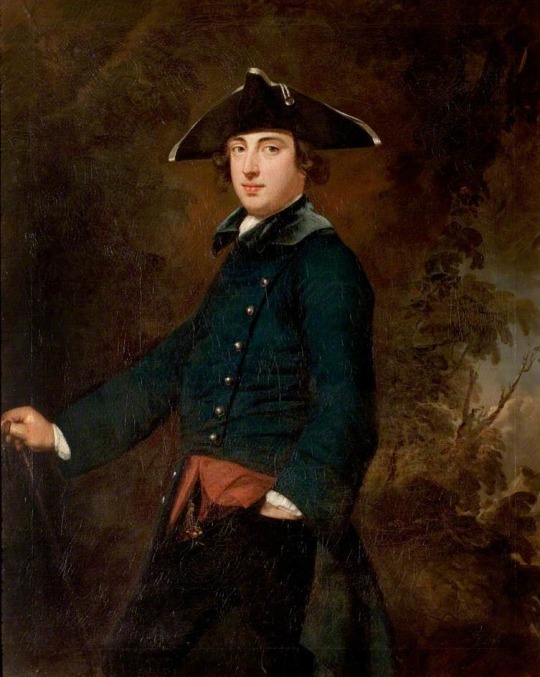

John Byron next to a first edition copy of Frankenstein.
John joined the Royal Navy at 14 and by the ripe old age of 17 had proved himself by surviving a deadly shipwreck off the coast of Chile. The voyage was part of George Anson's famous circumnavigation of the globe done to seize Spanish ships. Only 188 men of the original 1,854 crew members survived; several, including Byron, were taken as prisoners by the Spanish. Recollections of the voyage were sensationalized and it was depicted in stories like William Cowper’s poem The Castaway. John Byron published his own successful memoir, The Narrative of the Honourable John Byron (1768).
The novel's full title deserves attention for it's 18th century pre-Byronic melodrama: "The Narrative of the Honourable John Byron (Commodore in a Late Expedition Around the World) Containing an Account of the Great Distresses suffered by Himself and his Companions on the Coast of Patagonia from the Year 1740, till their Arrival in England, 1746. With a Description of St. Jago de Chili, and the Manners and Customs of the Inhabitants. Also a Relation of the Loss of the Wager Man of War, one of Admiral Anson's Squadron." I can only imagine that had his grandson Lord Byron's memoirs been published instead of burned, their title would have borrowed from his grandfather's by including something similar to "Containing an Account of the Great Distresses suffered by Himself . . ." but I digress.
I do not digress. The beginning of his preface opens with this gem (I've swapped the 18th-century "long s" for a regular one):
"But here I must say, I have been dubious of the partiality of my friends; and, as I think, justly fearful lest the world in general, who may perhaps find compassion and indulgence for a protracted tale of distress, may not give the same allowance to a luxurious imagination triumphing in a change of fortune, and sudden transition from the most dismal to the gayest scenes in the universe, and thereby indulging an egotism equally offensive to the envious and censorious."
Which brings to mind Francis Cohen's criticism of Lord Byron's Don Juan: “Lord B. should have been grave & gay by turns; grave in one page & gay in the next; grave in one line, & gay in the next. And not grave & gay in the same page, or in the same stanza, or in the same line… we are never drenched & scorched at the same instant whilst standing in one spot" (letter to John Murray, 16 July, 1819). And (not the most entertaining part, but to keep things brief) part of Byron's retort: "I will answer [Cohen] who objects to the quick succession of fun and gravity — as if in that case the gravity did not (in intention at least) heighten the fun. His metaphor is that ‘we are never scorched and drenched at the same time!' Blessings on his experience!" (letter to John Murray, 12 August, 1819).
John went on to be considered one of the greatest naval commanders of his era, commanding several ships as captain during the Seven Years’ War and beating the French as leader in the Battle of Restigouche. He later set the record for fastest global circumnavigation at the time while commodore, became a notable explorer, became a commander at multiple Royal Navy stations, and was appointed Governor of Newfoundland in Canada for three years. According to Wikipedia, “his actions nearly caused a war between Great Britain and Spain.”
It seems like he basically just did whatever the hell he wanted. We can see that the apple really doesn't fall too far from the tree. Everyone in the Byron family was kind of crazy. See: psychologist Kay Jamison's Touched By Fire, a novel on the mental illness of famous writers, half of which is focused on Lord Byron (as it should be) and includes an extensive psychological analysis of his whole family tree, which in a short summary brings me back to my previous point: everyone in the Byron family was kind of crazy.
John's health declined after sustaining storm-induced injuries and an unsuccessful attack against the French at the Battle of Grenada. He died at 62 with six living children. His grandson, the poet Lord Byron, borrowed inspiration from John's life and the shipwreck descriptions in his memoir while he was writing the shipwreck sequence in his magnum opus Don Juan.
In an epistle to his half-sister (Epistle to Augusta) Byron mentions their grandfather thus:
"A strange doom is thy father's son's, and past / Recalling, as it lies beyond redress; / Revers'd for him our grandsire's fate of yore— / He had no rest at sea, nor I on shore. / If my inheritance of storms hath been / In other elements, and on the rocks / Of perils, overlook'd or unforeseen, / I have sustain'd my share of worldly shocks, / The fault was mine; nor do I seek to screen / My errors with defensive paradox; / I have been cunning in mine overthrow, / The careful pilot of my proper woe."
On to the Scottish doctor James Lind! He's important because he developed the theory that citrus fruits treated scurvy, and in attempting to prove so he conducted the world's first ever official clinical trial. In his tests, he used the survivors from this famous shipwreck. This likely included Byron himself, being one of the few survivors and having reported the healing effects of citrus in restoring men who were on the verge of death. Needless to say, the discoveries and implications of Lind's clinical trial had an unprecedented impact on the fields of nutrition and medicine, and all of history, particularly in the Caribbean. In 1753 he published his Treatise on Scurvy.
Lind's theories on scurvy influenced the famous Captain James Cook, who implemented these ideas and proved their efficiency by how few men he lost to scurvy compared with every other Captain at the time. When Cook circumnavigated the world on his first voyage, no one died of scurvy. This didn't help with malaria and dysentery, which nearly wiped out his whole crew at one point on a journey to Indonesia. Aside from Anson's shipwreck, Cook's voyages were the other major instance of what I would call "social experiments at sea, or, fuck around and find out: scurvy edition" which led to the development of scurvy research.
As an aside, there is a famous town in Australia named Byron Bay. That town was named by Captain Cook in 1770 as a tribute to John Byron. Cook was sailing around on the HMS Endeavour doing even crazier colonial shit, and he likewise died as the result of his sea travels. He was killed in a scuffle on Hawaiʻi Island which transpired after he had casually tried to kidnap King Kalaniʻōpuʻu-a-Kaiamamao in broad daylight, planning to ransom him out of revenge for the theft of one of his boats, although Cook himself had stolen their sacred wood first after they had been so nice to him. This is what I've gathered from reading a bit about the confusing affair, but the main point is that Cook got what was coming to him. The Journals of Captain Cook were published to major success, contributing to the history of English travel narratives. But Cook is a pretty well-known historical figure so I can't go into his chaotic life any more than this, lest I be writing forever.
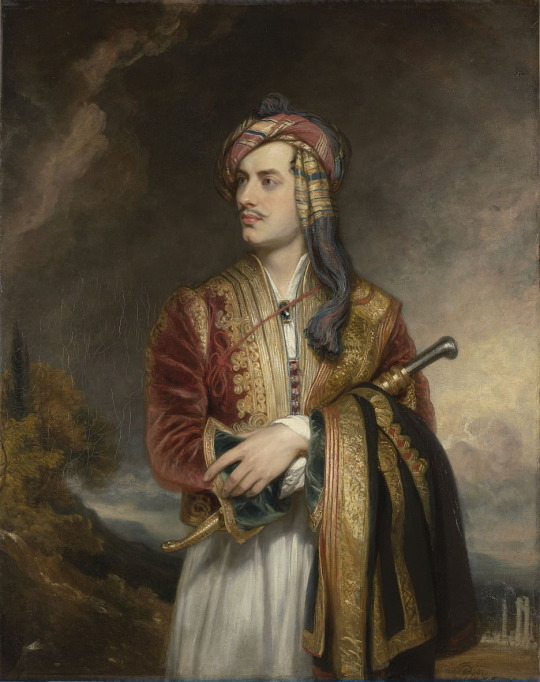

Lord Byron in an Albanian oufit he bought while traveling for 2 years, & Captain Cook thinking about navigation. The backgrounds make them look part of the same painting, no?
Back to the Linds: interestingly enough, the scurvy-studying physician James Lind had a younger cousin who was also a physician named James Lind, as well as a scientist/philosopher/teacher. While teaching at Eton, this Lind became a tutor and mentor of a young Percy Bysshe Shelley, and had such an impact on him that Shelley refers to Lind in several of his works. Shelley especially enjoyed Lind’s experiments regarding galvanism - the study of bringing things to life with electricity. It is widely believed by scholars that Shelley’s conversations and rememberances about Lind at Lord Byron's Villa Diodati were some of the primary inspiration for Mary Shelley’s novel Frankenstein (1818).
For further reading on Shelley's Lind: The real Doctor Frankenstein? by Christopher Goulding via Journal of the Royal Society of Medicine. Lind's Wikipedia page has a section devoted to Frankenstein.
Percy Shelley described his Lind:
". . . exactly what an old man ought to be. Free, calm-spirited, full of benevolence, and even of youthful ardor: his eye seemed to burn with supernatural spirit beneath his brow, shaded by his venerable white locks, he was tall, vigorous, and healthy in his body; tempered, as it had ever been, by his amiable mind. I owe to that man far, ah! far more than I owe to my father: he loved me, and I shall never forget our long talks, where he breathed the spirit of the kindest tolerance and the purest wisdom . . ."
A tie-in to vampire literature: Lind is also thought to be an influence on Bram Stoker’s Dracula (1897), which was influenced by (Lord Byron’s doctor) John Polidori’s novel The Vampyre, the first ever vampire novel, which was inspired by Lord Byron’s short vampire story Augustus Darvell, which was written at the same time as Frankenstein during their infamous ghost story competition at Villa Diodati. Augustus Darvell was inspired by Byron's travels through Eastern Europe, and was likely in part inspired by (another famous Romantic poet) Samuel Taylor Coleridge’s gothic poem Christabel, which Byron terrified Percy Shelley with after reading it aloud at the Villa Diodati, and which Byron loved so much that he helped Coleridge publish it through his own publisher. Christabel began in 1797 but wasn't published until 1816 for this reason.
To continue on vampires: Byron's enemy, the famous poet Robert Southey (who Byron roasted in Don Juan, among other works, and basically cancelled him as a result) also wrote a poem called Thalaba the Destroyer (1801) which is sometimes considered to be the first true depiction of a vampire in English literature. He also wrote it while traveling. Shelley (and Keats) both loved this poem, and so it also *could have* inspired some of the conversation at the Villa Diodati if Shelley had related the vampire theme to Christabel or Darvell. Southey is also the first English writer to write on Haitian zombi folklore, which would later become the zombie of modern horror. Southey was also reportedly in love with Mary Wollstonecraft Godwin, the mother of Mary Shelley and philosopher who wrote A Vindication of the Rights of Woman (1792), one of the most influential proto-feminist texts.
I relate these connections to demonstrate how small the literary world was at the time; so small that all the writers pretty much knew each other. In 1801, the English population was about 11 million, and in 1899 had grown to around 37 million due to industrialization (source: Black, Joseph, et al. "British Literature: A Historical Overview." The Broadview Anthology of British Literature, Broadview Press, vol. B, 2010, p. 70).
That's nearly the current population of London alone, but around 75% of that 11 million English population in 1801 was rural, whereas at the end of the century the national population was about 75% urban (source: same as prior), again due to industrialization. London in the early 19c was much less populated than today, and the amount of people who were educated or even merely literate was also much smaller than today. So really, it makes sense that all of the artists/writers/scientists/aristocrats knew each other. But it's still insane to see examples of how small the world really is and always has been.

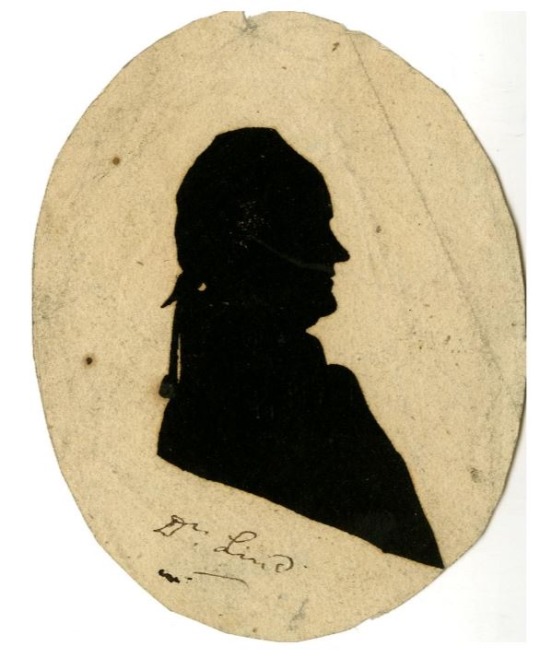
The front-facing portrait is of Scurvy Lind, the shadow portrait is of Galvanism Lind.
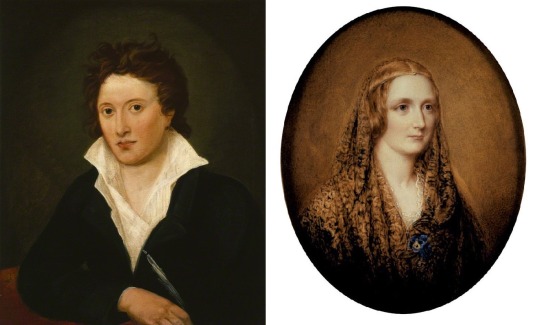
The Shelleys: the King and Queen of Romanticism.

Southey, Coleridge, Polidori, Stoker: some early Kings of Vampirism (as represented in popular British literature).
#james lind#scurvy trials#scurvy#lord byron#mary shelley#percy shelley#literature#english literature#science#history#rambles#john byron#english history#england#english#uk#1800s#19th century#frankenstein#british history#romanticism#writing#my analysis#my writing#my essays#ramble
71 notes
·
View notes
Text
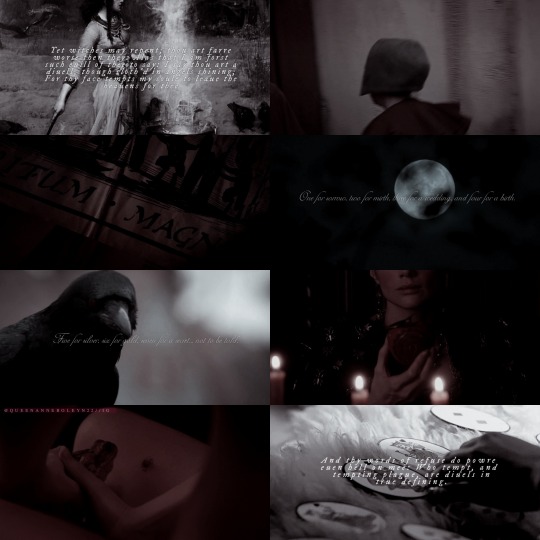
"America’s tiny reign of terror, Salem represents one of the rare moments in our enlightened past when the candles are knocked out and everyone seems to be groping about in the dark, the place where all good stories begin. At a time of shuddering devastation, they all stepped in as the dragon-slayers. Witchcraft tied up loose ends, accounting for the arbitrary, the eerie, and the unneighborly.
The sky over New England was crow black, pitch-black, Bible black, so black it could be difficult at night to keep to the path, so black that a line of trees might freely migrate to another location or that you might find yourself pursued after nightfall by a rabid black hog, leaving you to crawl home, bloody and disoriented, on all fours.
Salem is in part a story of what happens when a set of unanswerable questions meets a set of unquestioned answers. Although, the witch hunt stands as a cobwebbed, crowd-sourced cautionary tale, a reminder that—as a minister at odds with the crisis noted—extreme right can blunder into extreme wrong." - Stacy Schiff, The Witches: Salem, 1692
#Stacy Schiff#witches#witches in history#historyedit#perioddramaedit#history#perioddramasource#periodedit#salem witch trials#salem witches#salem#salemedit#17th century#witch trials#witchcraft#witchcore#witchblr#witch aesthetic#witches history#american history#new england#halloween#samhain#witchesedit#mary sibley#tituba#witches of salem#women of history#women in history#historical figures
38 notes
·
View notes